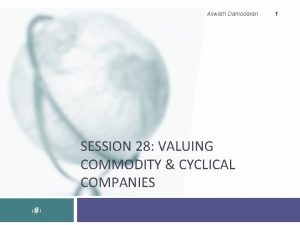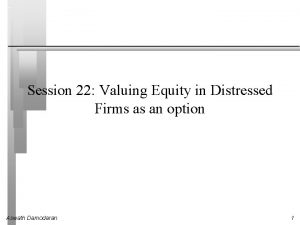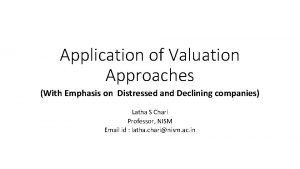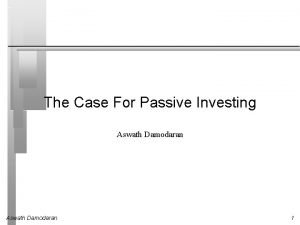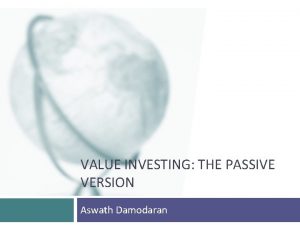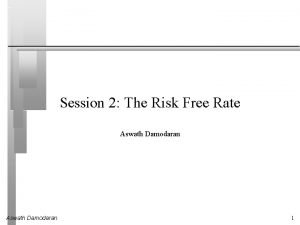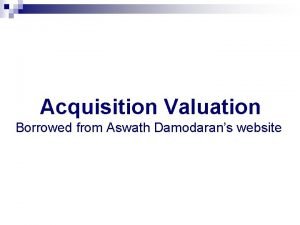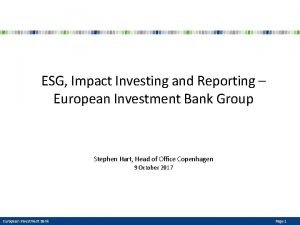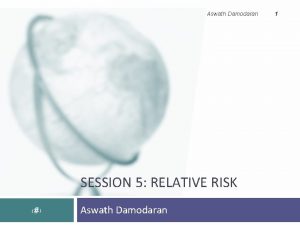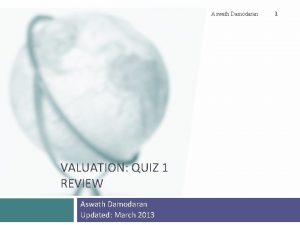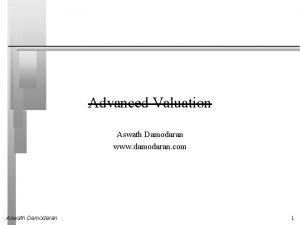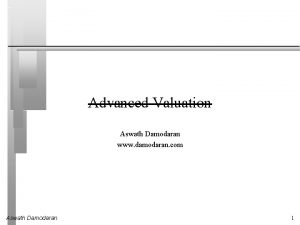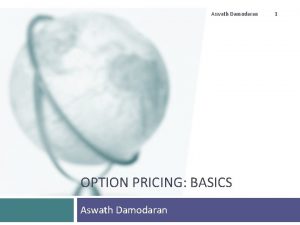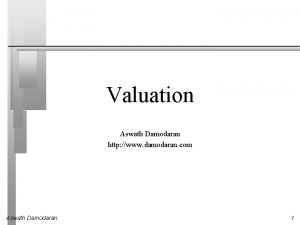Aswath Damodaran SESSION 28 VALUING COMMODITY CYCLICAL COMPANIES











- Slides: 11

Aswath Damodaran SESSION 28: VALUING COMMODITY & CYCLICAL COMPANIES ‹#› 1

Valuing Commodity & Cyclical Companies 2 Aswath Damodaran 2

Valuing cyclical and commodity companies 3 Aswath Damodaran 3

Lesson 1: The Operating Numbers will ebb and flow 4 With both cyclical and commodity companies, it is a given that the operating numbers (and earnings in particular) will be volatile, even for mature firms in the space. That volatility comes from economic cycles (for cyclical firms) and commodity price cycles (for commodity firms) If you value these firms based on the most recent year’s numbers, you can over value the firm (following a peak year) or under value the firm (following a bottom year). The conventional solution to this problem is to average numbers across a cycle and to normalize operating numbers. Aswath Damodaran 4

5 Aswath Damodaran ‹#›

Lesson 2: With “macro” companies, it is easy to get lost in “macro” assumptions… With cyclical and commodity companies, it is undeniable that the value you arrive at will be affected by your views on the economy or the price of the commodity. Consequently, you will feel the urge to take a stand on these macro variables and build them into your valuation. Doing so, though, will create valuations that are jointly impacted by your views on macro variables and your views on the company, and it is difficult to separate the two. The best (though not easiest) thing to do is to separate your macro views from your micro views. Use current market based numbers for your valuation, but then provide a separate assessment of what you think about those market numbers. 6 Aswath Damodaran 6

7 Aswath Damodaran

Lesson 3: Use probabilistic tools to assess value as a function of macro variables… If there is a key macro variable affecting the value of your company that you are uncertain about (and who is not), why not quantify the uncertainty in a distribution (rather than a single price) and use that distribution in your valuation. That is exactly what you do in a Monte Carlo simulation, where you allow one or more variables to be distributions and compute a distribution of values for the company. With a simulation, you get not only everything you would get in a standard valuation (an estimated value for your company) but you will get additional output (on the variation in that value and the likelihood that your firm is under or over valued) 8 Aswath Damodaran 8

Shell’s Revenues & Oil Prices Shell: Revenues vs Oil Price 500, 000. 0 $ 120. 00 450, 000. 0 350, 000. 0 $ 100. 00 Revenues = 39, 992. 77 + 4, 039. 39 * Average Oil Price R squared = 96. 44% $ 80. 00 300, 000. 0 250, 000. 0 $ 60. 00 200, 000. 0 $ 40. 00 150, 000. 0 100, 000. 0 Average Oil Price during year Revenues (in millions of $) 400, 000. 0 $ 20. 00 50, 000. 0 0 198919901991199219931994199519961997199819992000200120022003200420052006200720082009201020112012201320142015 Revenue $- Oil price 9

10 Aswath Damodaran

Pricing Commodity/Cyclical Companies – Three choices for standardization 11 Base year numbers: The market value of equity or firm can be divided by the most recent year’s numbers, on the assumption that even if there are cycles, those cycles are affecting all companies in the sector. Normalized numbers: You can first normalize the numbers (average earnings or revenues across a cycle) and then divide the market values by these normalized numbers. You are assuming that cycles are the only reason for operating number changes over time and that all companies will recover with the cycle. Potential: You can divide the market value by reserves or potential for production rather than operating numbers. You are assuming that all reserves/potential are equally valuable. Aswath Damodaran 11
